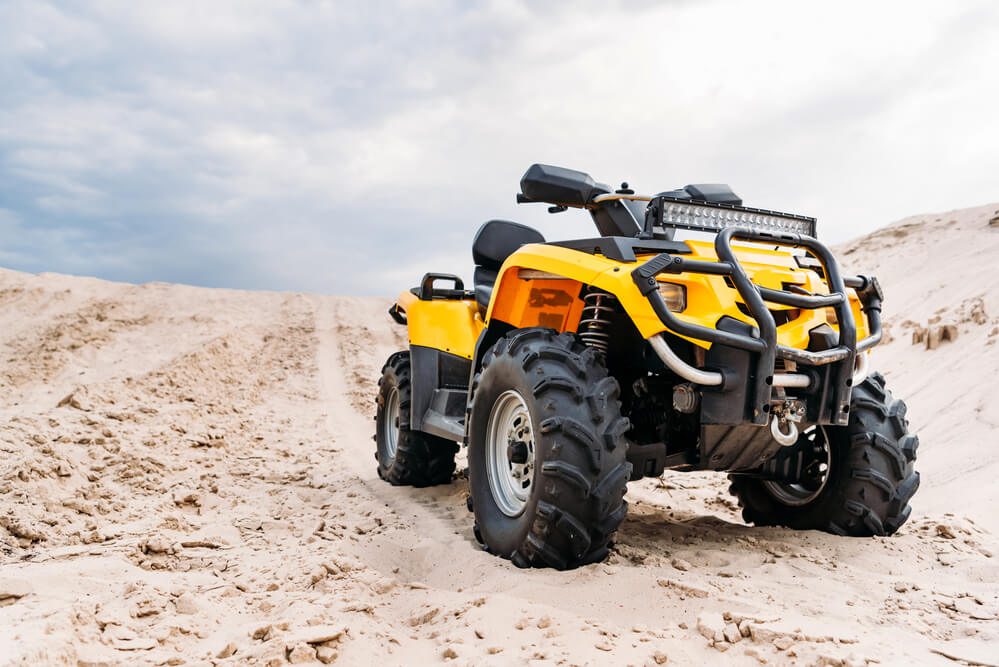Are you thinking of buying an ATV soon, worried about its weight?
Knowing an ATV’s weight is vital when determining which one to buy and ensuring you can move it effortlessly.
First, it’s good to understand that motorized vehicles are designed for dirt roads or off roads and not highways.
Additionally, they are large with powerful engines, which allow them to move at a speed of 60km per hour.
Read on to know more about these vehicles.
Average Weight
The average weight of an ATV is roughly 590 pounds, equivalent to 268kg dry weight.
Note that most companies will tell you about the dry weight, which is the weight you will see in the showroom without fuel and other liquids.
You will also find a machine that gives you the gross weight, including the fuel, optional equipment, and riders.
The weight of an ATV depends on the engine size, and they come with a lot of variances in the sizes.
Weight is not the only factor to consider when buying an ATV; look at the dimensions and the engine power.
Weight by Class
Here are some of the common weights you can consider.
1. 50cc
The 50cc is the smallest ATV you can find, and it’s the lightest, with an average weight of 215 pounds.
2. 90cc
It’s one of the most popular sizes suitable for kids, and it weighs around 265 pounds; most brands have theirs weighing between 250-and 260 pounds.
3. 200cc
If you love bigger youth models, you will feel comfortable with this one, and it’s an advancement from the junior levels.
However, you won’t find a huge selection in this weight.
4. 350cc
The average weight is 490 pounds, whereas most brands are at 500 pounds, with the heaviest weighing 588 pounds.
5. 500cc
Most of the ATVs in this category weigh an average of 630 pounds, with the heaviest model at 791 pounds.
6. 800cc
With this one, you are now hitting the reality of big vehicles, and it has an average weight of 715 pounds. Most of the brands have an additional 50 pounds or less to the average.
7. 1000cc
Finally, we have the most powerful and biggest ATV with an average weight of 840 pounds.
You must be ready for the heavyweight since it’s not easy to find a lightweight version when settling on this one.
What to Consider Before Settling on an ATVs Size and Weight
1. User‘s Size
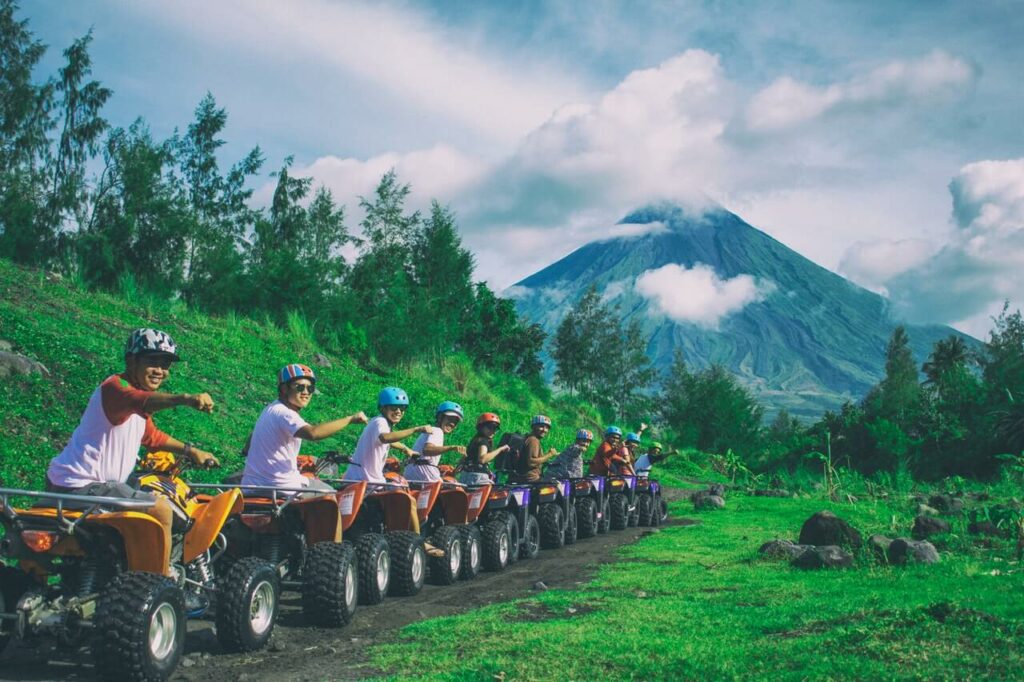
Your physical size will help greatly determine the kind of ATV that will work well for you.
If you plan to ride for a longer time, an ATV that fits your body will enhance your comfort.
For a start, people under 5’10” can go with the 400cc below ATVs, while a person at 6’2″ will love to advance to a 500cc one.
There is no limit to the class of an ATV if you feel safe riding it, and the power feels unmatched for you.
2. Other Users
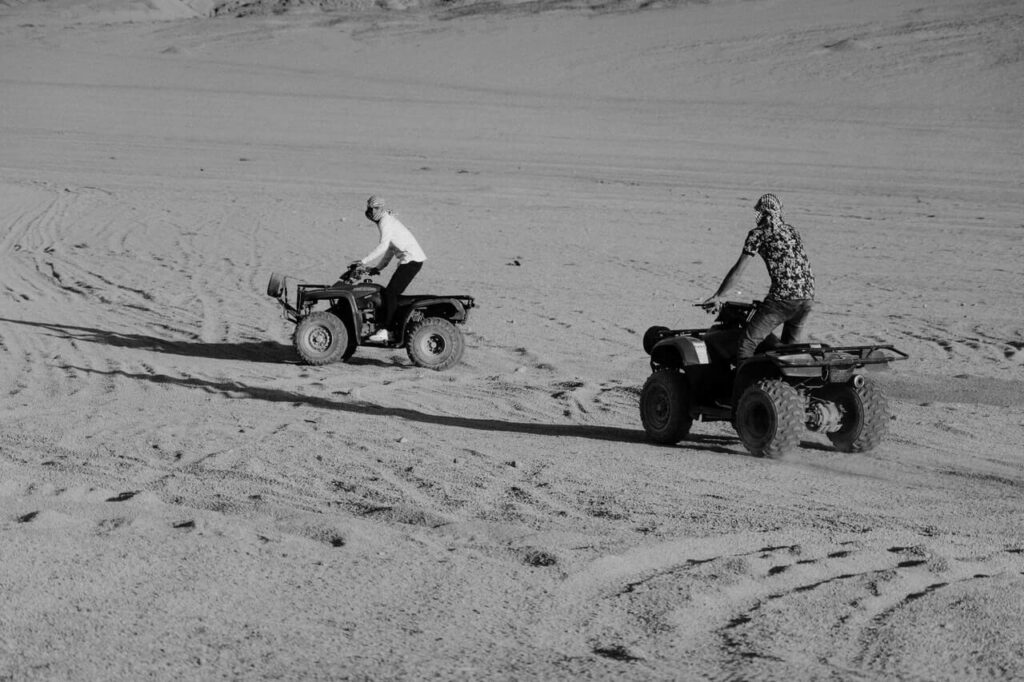
When sharing it with the kids, a 1000cc may feel scary, especially if they are first-time riders.
New riders feel safer with smaller ATVs, and sticking around 400- 500cc will give them an easy time with the electronic transmission.
Additionally, if you are to share it with your spouse or older kids, get one ranging between 500 to 7000cc for comfortability.
3. Riding Terrain
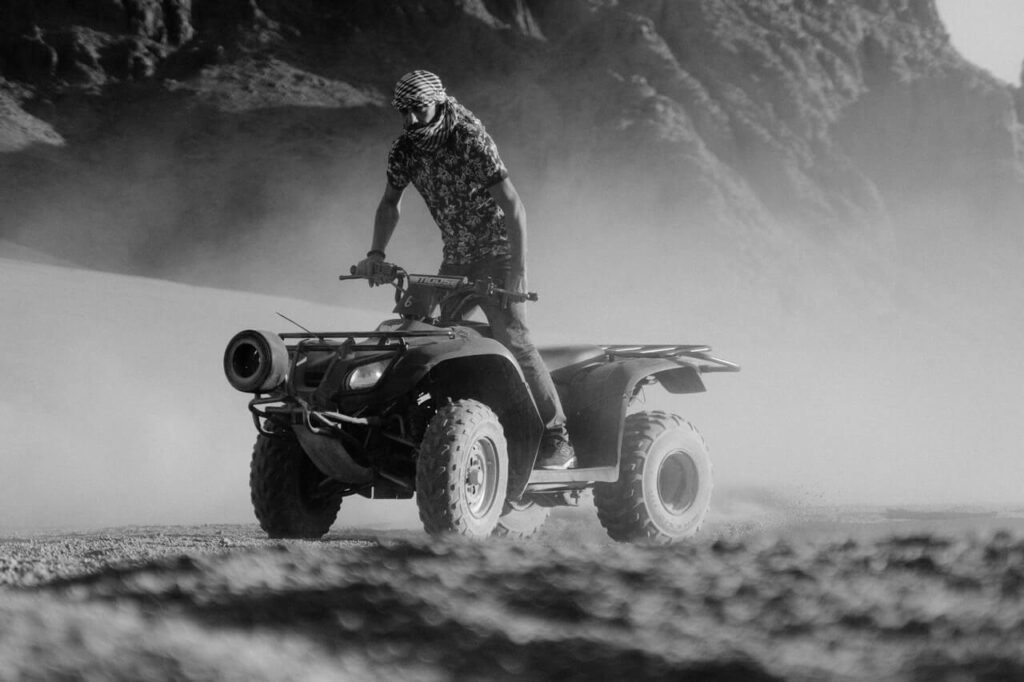
The terrain and area you plan to ride your ATV matter greatly in your purchase.
If you are covering a short distance within your compound and property, a 550 cc and below ATV will serve you well.
Aggressive trail riders need a more powerful ATV to climb steeper hills and tow and howl; a 500-700cc will work perfectly.
The harsh terrains such as mud pits and dunes require the most powerful ATVs ranging between 700 to 1000cc.
Safety Guidelines
Although there’s no restriction about who should ride an ATV, AAP recommends that kids aged 16 and below keep off the bikes.
Follow these safety tips when taking your ride.
- Enroll in a safety training course that will help you operate the right ATV according to your size and age.
- Wear a helmet and eye-protecting before you start your ride.
- Always dress in long sleeves, long pants, and gloves to protect you from cuts and scrapping.
- Avoid riding in darkness.
- Keep a safe speed when riding.
- Have basic fast aid knowledge for emergency purposes.
- Never ride under the influence.
- Never get to the highway, public roads, or paved ways.
- Don’t allow kids to drive with a passenger.
- Comply with the manufacturer’s recommendations on passengers.
Before allowing your little one to ride an ATV, ensure they are familiar with the state rules and visit the Consumer Product Safety Commission and get information.
ATV Cargo Capacity
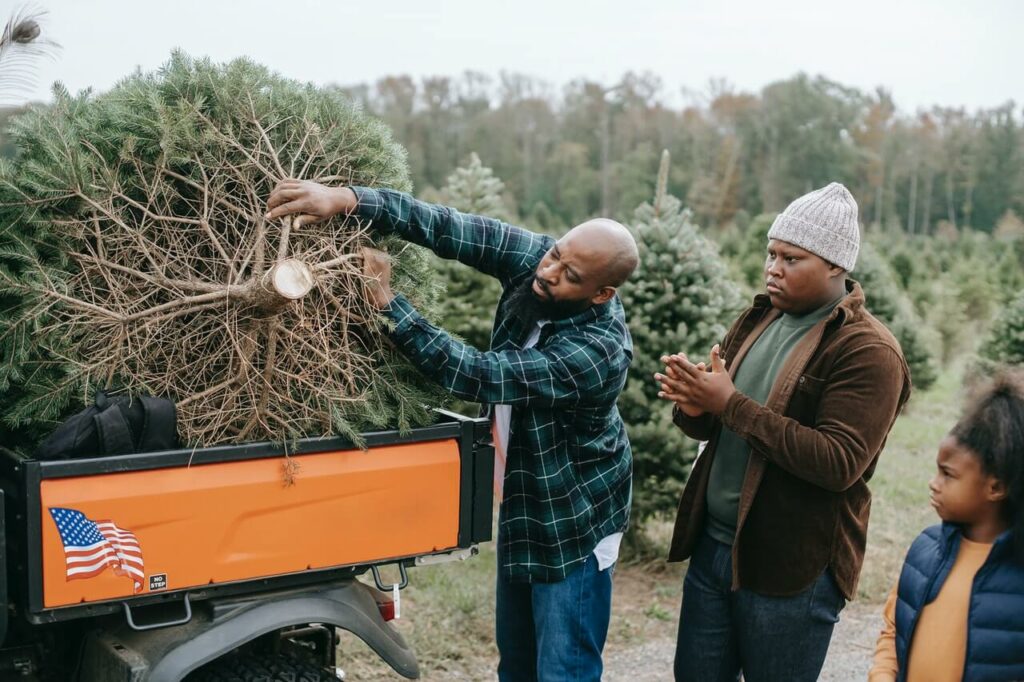
Most ATVs are for recreational purposes, but sometimes depending on your mission, you may want to bring cargo.
However, there are limits to the amount of cargo you can place on it.
The type and model of your ATV play a part in determining the amount of cargo to put in it (read this if you want to put a plow on an ATV), and to make it easier, most companies include the box capacity.
You must consider the payload capacity: a cargo’s combined weight and the passengers that a vehicle can carry.
The average capacity of an ATV is 120 pounds on the front track and 240 pounds on the rear truck.
Frequently Asked Questions
1. How much Weight Does Fuel Take?
It depends on the model, but most take 6.3 pounds for every gallon and 25 pounds for a full tank.
2. Are Kids Allowed to Ride ATVs?
AAP recommends that children under 16 years keep off the vehicles, and after achieving the right age, they should attend training first.
3. What Are Some of the Essentials in My Ride?
First, you need to have your helmet, google for eye protection, and don’t forget your tire repair kit.
Final Thoughts
Ensure you go for a machine that matches your needs, such as weight, speed, and capacity. The terrain you plan to ride your machine also matters, and if you are in places where the vehicle is likely to roll over you, a lightweight one will work well.
Go for a weight you can control well in sharp corners, lift the front, or push it in an inclination.

